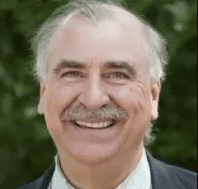At age 15, Maggie had attempted suicide. After five days in an adolescent inpatient hospital, she was released. Back at home, however, her family was not ready to receive her. With both her mother and stepfather working, and younger siblings living in the house, the family needed options before integrating Maggie back into the household. Both the family and professionals agreed that if Maggie returned home, the volatility between she and her mom could result in severe conflict or self-harm. As the family looked for solutions, two formats existed: one where Maggie continued in a long-term facility, receiving group and individual therapy, and the second in a residential program that insisted on family involvement in treatment. Fortunately, her parents intuited what many Managed Care Organizations (MCOs) have long realized: of all treatments for severely symptomatic children and adolescents, family therapy works best.
The Rise, Fall and Reemergence of Family Therapy
For a quarter of a century, family therapy surged, gaining prominence in the 1970s before fading in the 1980s, then reemerging in recent years. At its peak, clients’ struggles were treated systemically—meaning that parents’ and children’s reciprocal interactions, the emotional wellbeing of all family members, and intergenerational trauma were the treatment focus. In essence, problems were examined between people, rather than within them as isolated symptoms. Children could influence their parents’ behavior and vice-versa. This was a revolutionary approach to mental health treatment.
In the 1980s, family therapy was being practiced throughout the country. Institutes offered family therapists training, collegial support, and a professional identity. Home-based treatments flourished. While being home-based is not a theoretical model, it’s an approach that allowed therapists to work intensively and briefly with an entire family to create stability.
To understand the fall—and subsequent reemergence—of family therapy in the public sector, it helps to grasp some of the intricacies of MCOs. After years of insurance paying for therapy with little outcome data expected, the MCOs began requiring psychotherapists to prove that their therapy was effective. In the early days of managed healthcare, clinicians were required to submit treatment plans in order to receive two approved sessions. Often, for every additional session, the clinician needed to justify continuation of treatment. This painstaking system interfered with the flow of treatment and burdened clinicians with unnecessary paperwork.
Clinical researchers realized that clear evidence of treatment outcome success was necessary. They ran clinical studies and meta-analyses to prove that family therapy was more effective than control groups on several measures—and it was. Despite what the data showed, though, family therapy receded into the background as cognitive behavioral therapy (CBT) emerged into the limelight. Even when treating children, cognitive behavioral approaches were pushed as the efficacy originating from randomized controlled trials (RTC) asserted its dominance. It wasn’t that family therapy was less effective than CBT; rather, we didn’t have the methodological means to capture the complexity of family therapy in RTCs. Along with other modalities, such as psychodynamic, gestalt, and systems therapy, family therapy started to be viewed as cumbersome and unpredictable. Why treat the entire family when CBT could be used to treat one member of the family: the identified patient?
In the early days of evidence-based treatments, a number of family therapy institutes shuttered, and in an attempt to rein in costs, evidence-based treatments were popularized. But severely symptomatic children were not served well by many of the individually focused, evidence-based approaches receiving governmental and insurance support. The cost of treating these children sky-rocketed because a child cycling from inpatient to outpatient treatment and then back to inpatient again, incurs a high price. On the other hand, shifting back to family therapy contained costs, served a critical need, and prevented these children from becoming lifelong patients.
A Necessary Approach for Underserved Families
In the last few decades, systems approaches have proved their outcome validity and returned as a vibrant and necessary approach for underserved families. Ecosystemic structural family therapy, functional family therapy, emotionally focused family therapy, multisystemic family therapy, and attachment-based family therapy have all proven through outcome research to be effective treatments for families where children have chronic problems, severe behavioral difficulties, developmental delays, and antisocial behaviors.
As an example, take Pennsylvania. In the late 1980s, The Pennsylvania Children’s Bureau—the state’s administrative headquarters for mental health treatment for children—approached The Philadelphia Child Guidance Center to create a family approach that could assist challenging children. Through a study funded by the state, the clinical success of eco-systemic structural family therapy was established with 4,000 cases of family treatment. The data demonstrated that family therapy reduced the number of long-term residential placements and improved family and child functioning. Given the preponderance of this supporting data, the state permitted the term practice-based evidence to be applied to Eco-Systemic Family Therapy.
Practice-based evidence suggests that in the natural course of events, a treatment has been proven effective, even if it hasn’t been subjected to traditional research. With this shift, the MCOs ushered in a new age for family therapy. Since then, family therapy has flourished in Pennsylvania’s intensive in-home services, known as Family Based Mental Health Services (FBMHS), which mostly serves families eligible for Medicaid and started as a collaboration between the state’s Children’s Bureau and The Philadelphia Child Guidance Clinic, the birthplace of Minuchin’s Structural Family Therapy.
As a result of this collaboration, eco-systemic structural family therapy became enshrined in regulations governing the clinical model that would drive all intensive, in-home behavioral health services for children and adolescents with serious emotional problems. The regulations also ensured there would be trained family therapists able to implement the service by mandating that all FBMHS therapists and supervisors complete 270 hours of intensive training in ESFT during their first three years on the job.
Currently, there are three family therapy training centers who oversee this training and develop outcome studies to support the effectiveness of this approach with multi-stressed families. On director estimates that through the Medicaid funded agencies in Pennsylvania about 5,000 families are treated a year. These training centers are hired by agencies across the state that receive Medicaid payments for their clinical population, families that are often beset with trauma, addiction, financial worries, and a myriad of other woes. It is in this public sector world that family therapy is flourishing. At agencies serving Medicaid patients, therapists often stay until they can get licensed. Supervisors at these facilities often are dedicated, better paid, and involved in the research and improvement of the model. The dedication of these professionals, both the direct service staff, and the supervisors, cannot be understated.
Ecosystemic structural family therapy combines elements of Minuchin’s structural family therapy with attachment theory and emotional regulation skills (as popularized though Dialectical Behavioral Therapy). Family-focused interventions are designed to strengthen caregivers’ executive skills and their emotional connection with their child. They’re also meant to support all family members in learning how to de-escalate conflicts and problem solve when tensions are high. By empowering caregivers, therapists help the helpers. Child clients begin to participate more at home, school, and in their community and to learn effective ways of coping with stress and managing emotions.
In settings where a child’s behavior or problem can be most effectively addressed in the context of a family, systems therapy has returned. The work is challenging, yes—but it’s satisfying when you can help a family with a child who regularly acts out and help spouses function better as a unit.
Practicing Family Therapy
Let’s return to the case of Maggie. Her mother and stepfather contacted the Warwick House, a short-term residential facility for adolescents that required family involvement in treatment. Her mom had a significant trauma history, which had been interfering with her ability to openly show love toward her husband and children. Family therapy helped them identify and reduce the impact of interpersonal stressors. It provided space, structure, and guidance for different family members to work through emotions that had previously been swept under the rug and fueled outbursts.
The public sector, where therapists often work with a team to address a family’s complex issues, provides clinicians with conditions conducive to practicing family therapy. For instance, Special People in the Northeast (SPIN) is dedicated to treating individuals with developmental disorders. While interventions suited for the individual on the spectrum are useful, they can only be reinforced in the home when the whole family is involved in treatment. Families with children on the spectrum often have other concerns that, when addressed, enable everyone in the family system to function more cohesively.
One client at SPIN, 10-year-old Luke, had been diagnosed with Level II ASD. He speaks and takes care of his basic hygiene needs, but still needs coaching, direction, and parental guidance. Luke receives behavioral therapy, but it’s the family that needs to negotiate his social-skill growth and learn to manage his tantrums.
In Luke’s case, the parents disagreed on the origin of his behavioral problems. Dad was wary of accepting the autism diagnosis and felt that consistent discipline was the key to getting Luke to “act more appropriately.” Mom, having accepted the diagnosis, wanted to find ways to connect with her son. She saw an emphasis on discipline as counterproductive to their parenting goals. Mom accommodated Luke’s differences, whereas dad believed more structure would be helpful. In this case, a family therapist worked to include dad, so he felt like he was a part of Luke’s development, and coached mom to remain open to dad’s suggestions. They also addressed their marital issues and the challenges of parenting their neurotypical eight-year-old daughter. The therapist focused on multiple goals simultaneously: helping the parents communicate effectively, making sure Luke was functioning well, keeping an eye on Luke’s sister’s needs, and assessing what the family needed as a whole to operate cohesively.

Society deserves family therapy. Fortunately, administrators today recognize family therapy as an effective treatment option for “at risk” families in need of a higher level of care. Whether you’re looking at it from a humanistic or a financial perspective, embracing family therapy is a win-win for clients and providers.
Scott Browning
Dr. Scott Browning, ABPP, is a professor in the department of professional psychology at Chestnut Hill College. He is an expert in family therapy who publishes on a wide array of topics, including the contemporary family, autism, empathy, and clinical training.
Melanie Puzio
Melanie Puzio, MS, is a doctoral student pursuing her Psy.D. at Chestnut Hill College with a concentration in couple and family therapy. She works as Dr. Browning’s graduate assistant. Melanie’s first publication examines strategic family therapy and its overlap with Dr. Browning’s clinical expertise.














